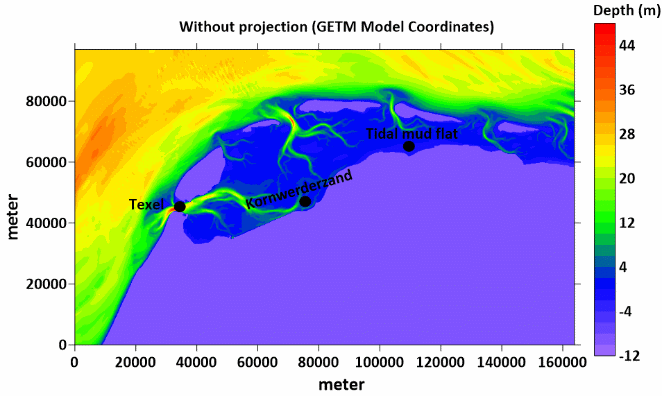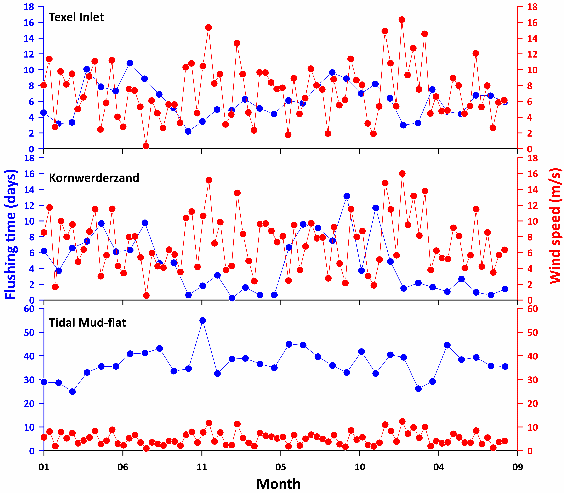A. Mitra1, J.F. Urbina2, C. Donatelli3, M. Duran-Matute2, U. Gräwe4, T. Gerkema1
1 NIOZ Royal Netherlands Institute for Sea Research; 2 Eindhoven University of Technology; 3 University of Texas at Austin; 4 Leibniz-Institute for Baltic Sea Research
*Corresponding author:
Introduction
The Dutch Wadden Sea (DWS) is an ecologically important multi-inlet water body between the North Sea and the Dutch mainland. The dynamics of this region is mainly modulated by the tidal action, variability of wind regime and the freshwater discharge. The present study aims to comprehend the hydrodynamics of the DWS on a multi-decadal timescale (35 years), both from a Lagrangian and Eulerian perspective. The fundamental objective of the current work is to quantify the transport time scales (e.g., age, flushing time, and residence duration) and their spatial and temporal variability, which likely govern key biological processes occurring in this area. Previous studies have quantified the tidal-residual characteristics of the DWS within the intertidal basins (Donatelli et al., 2022; Duran-Matute et al., 2014), that could impact the flushing of nutrient and pollutant to the adjacent sea. The present study attempts to estimate the local transport time scales (age and residence time) and the basin-wide integrated transport time scale (flushing time), in order to understand the decadal variability with variable wind and extreme events which could eventually impact the water quality and habitat niche.
Methods
Numerical simulations were carried out using the General Estuarine Transport Model (GETM) for a period of 35 years in the Dutch Wadden Sea. Eulerian approach was adopted to quantify the flushing time of the system. Eulerian passive tracers were also used to track the freshwater dispersal and to determine the residual circulatiion.
Results
The simulation results show that winds are the most important factor in net water transport processes and their variability. Tidal activity controls the system's salinity variations over the short term, whereas long-term anomalies are linked to wind variability and extremes therein. The system's flushing characteristics exhibit spatiotemporal variability, with the least flushing occurring close to the tidal mudflats during low wind conditions.


Fig 1. Bathymetry and local flushing time at three different regions of the Dutch Wadden Sea
References
Donatelli, C., Duran-Matute, M., Grawe, U., Gerkema, T., (2022) Residual circulation and freshwater retention within an event-driven system of intertidal basins. Journal of Sea Research, 186, 102242.
Duran-Matute, M., Gerkema, T., de Boer, G.J., Nauw, J.J., Grawe, U., (2014) Residual circulation and freshwater transport in the Dutch Wadden Sea: a numerical modelling study. Ocean Sci. 10 (4), 611–632. https://doi.org/10.5194/os-10-611-2014
I. Surname1*, F.N. Another-Surname2 , Y. Next-Surname2
1 University Name, Country; 2 Organization Name, Country
* Corresponding author: mail.name@organization.org


